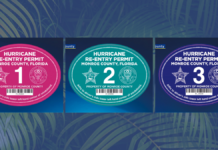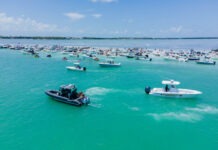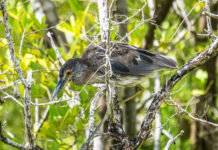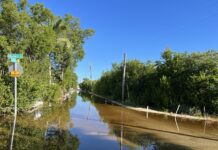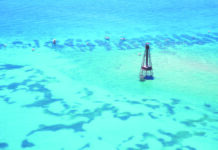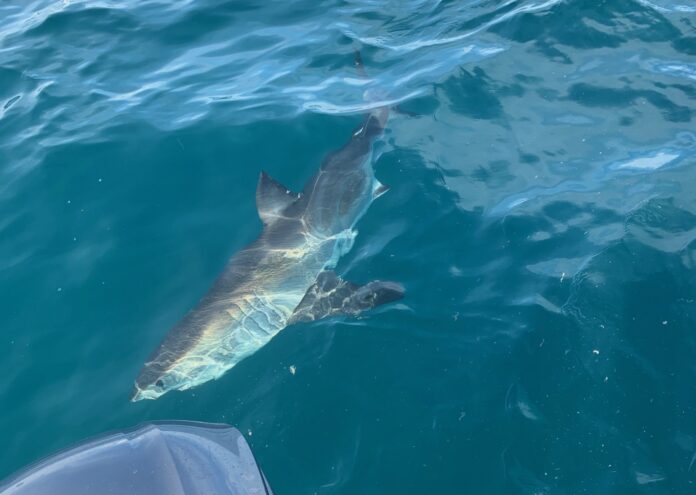
Bulls, hammerheads and reef sharks are common culprits known to fishermen trying to reel their catches past the “tax men” in the Florida Keys.
A great white? Not so much.
Mikki McComb-Kobza, executive director of the Ocean First Institute with a shark lab in Key Largo, was surprised to receive a call from College of the Florida Keys student Travis Ellington. Sending over a bevy of photos and videos, Ellington reported a juvenile white shark hanging out off the stern of family friend Tom Eacobacci’s boat while fishing off Duck Key on Jan. 21.
“He was just losing his mind,” said McComb-Kobza. “They found our institute and were like, ‘Hey, can you guys confirm what we’re seeing?’”
“We were just yellowtailing, normal reef fishing, and it just came up next to the boat,” Ellington told the Weekly. “It stayed around for a while, probably five or 10 minutes, but it actually didn’t try to snag any of our fish. It kept looking at the chum bag, but it never tried to bite it or anything.”
McComb-Kobza has more than 20 years of experience researching endangered species, including worldwide studies of white sharks with baited remote underwater cameras from the northeast Atlantic down to Florida. From her own experience, and after conferring with four colleagues, Ellington’s pictures were a dead giveaway.
The researchers confirmed the six- or seven-foot shark as a juvenile white, likely just one to two years old by their estimation, as newborn white sharks are already four to five feet long.
White sharks are known as a highly migratory species, frequently traveling from Canada all the way to the Gulf of Mexico and back throughout the year.
“They are cruising by the Keys, there’s no doubt; it’s just that we don’t know exactly when and why,” said McComb-Kobza. “But to find a juvenile is interesting. What we do know is that white sharks have a temperature preference, and 54 to 75 degrees is kind of their sweet spot. … The Keys have had some cold snaps, so that water is kind of conducive to those guys being there.”
The juvenile sighting marks the second publicized visit of a “snowbird” shark in 2023 as “Sable,” another juvenile white shark tagged by research group OCEARCH, “pinged” in the waters off Layton on Jan. 3. Named after Sable Island National Park Reserve, she was originally tagged in Nova Scotia but last “pinged” on Jan. 27 in the gulf waters off the Florida panhandle – a perfect example of the migration patterns McComb-Kobza described to the Weekly.
The long journeys aren’t unique to sharks in the western Atlantic, either, as McComb-Kobza described her trip in November to tag white sharks being chased away by killer whales in South Africa.
“It’s amazing to see where they’re going,” she said. “We think that those sharks in South Africa might be going all the way over to Australia.”
For all the trepidation a white shark sighting might trigger in most, Ellington and McComb-Kobza agreed: this was awesome.
“I’ve been in the ocean my whole life,” Ellington said. “It’s kind of crazy that in all the hours I’ve been on the water, I’ve only seen one.”
“It’s great news to be able to say that we’re seeing juvenile white sharks off the Florida Keys,” McComb-Kobza added. “It’s a good thing. And it’s indicating to us that management strategies that have been employed in the U.S. are working. In the ’80s, sharks really went down in numbers, and we’re starting to see those numbers rebounding.”
To view a live, interactive shark tracker with current and historical data for tagged animals like Sable, visit ocearch.com/tracker.


